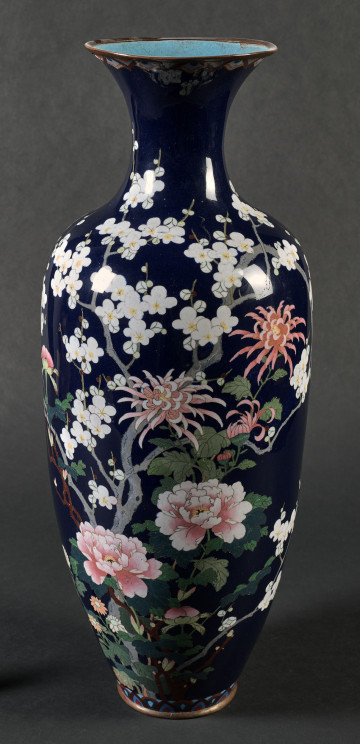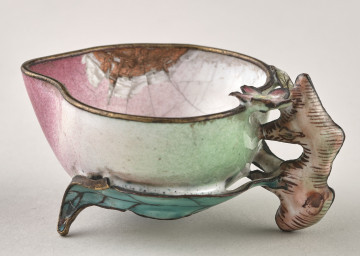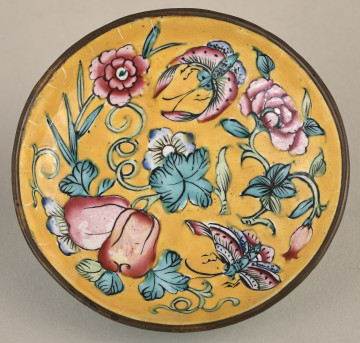
Vase
19th (?) century
Castle Museum in Łańcut
Part of the collection: Orient
A bronze censer depicting the deity of contentment and goodness – Hotei. Shown standing is a short man with a stocky build and rounded shoulders. In his hands, he holds a closed sack with symbolically depicted “all abundance”. His face is chubby, laughing, he has big ears and a naked torso. His arms and legs are shrouded in a long robe, which is arranged in numerous and soft folds. Item from the second half of the 19th century. Bronze, chiselled casting. Height – 20 cm. Origin – Japan. A censer is a vessel for burning incense or solid perfume. These vessels varied considerably in size, form and construction material. They were typically used in both secular and sacral areas in many cultures since ancient times. They were used to cleanse the air of “pathogens” during an epidemic threat, perfuming spaces, and even measuring time during rituals and ceremonies – the rate of burning of conical incense was measured. Incense is burned by placing it directly on a source of heat or a hot metal plate in the censer. Small concave charcoal briquettes were sold for use with incense to be used at home. A corner of the briquette was lit, the briquette was placed in the censer, and the flame was extinguished. After the glowing embers encompassed the entire briquette, it was ready for incense to be placed on it.
Dimensions
height: 20 cm
Object type
Orient
Technique
fine detail finishing, cast
Material
bronze
Creation time / dating
Creation / finding place
Owner
Castle Museum in Łańcut
Identification number
Location / status

19th (?) century
Castle Museum in Łańcut

18th-19th century
Castle Museum in Łańcut

2nd half of the 19th century
Castle Museum in Łańcut
DISCOVER this TOPIC
National Museum in Lublin
DISCOVER this PATH
Educational path